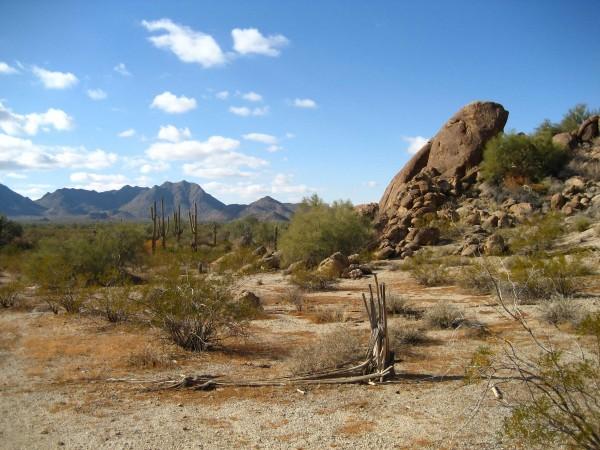
Global warming and climate change threaten our environment – there is no mystery here. Now, a new study warns that the ecosystems will be changed dramatically as an effect to that. Change is not new to mother Earth. Since the last ice age, which occurred thousands of years ago, our home plant has changed and evolved enormously.
Gradually the glacial conditions turned to grasslands and the grasslands became deserts. Now, the study warns that this would happen again. The only difference is that while previously the changes took thousands of years to unfold, this time because of the manmade climate change it will happen within less than 200 years.
The forests in Arizona would vanish with the rising temperatures and the deserts would become hotter and become more unstable in the future. Essentially, Arizona's forests, vegetation and water supply would be in immense danger in the coming century. The study also says that changes in vegetation across the globe would be dramatic as well. The study, published in the journal Science, was led by the University of Arizona.
Researchers found out that although the climate change would impact the entire world, Arizona, and the dry Southwest area would receive a huge blow. During the last 20 years, wildfires have scorched and destroyed over 1.5 million acres of Arizona pine forests. Severe drought conditions and the climate change have made the fires more frequent and the researchers believe the forests might never grow back and even if it does, it won't be the same.
"I think it's ubiquitous. But I think Arizona's the canary in the mineshaft," co-author of the research paper Jonathan Overpeck said. He is the University of Michigan dean of the School for Environment and Sustainability.
As the environment becomes warmer, the ecosystems change. So, in turn, the structure of the ecosystem, which include the reasons that make it a desert or a forest, also change. The researchers found out that the regions where the temperature increases the most also face the maximum amount of changes in vegetation.
The researchers evaluated the ecological data of the time period between the last ice age, which occurred 21,000 years ago, and the pre-industrial era.
Arizona was not always a desert. Following the last ice age, the region that is known as Arizona's dry desert was piñon-juniper woodlands, said Overpeck. As the temperature increased over the course of thousands of years, woodlands turned to grassland and finally to the desert.
"That's exactly the kind of structural change we're talking about being at risk in the future. That's a huge change ... now, we're going to warm it up even more. It will be just as dramatic a change," he added.
Only this time, instead of taking 21,000 years the change will occur within the next 200 years.
"It's going to be a lot more chaotic. If you're living in this century, you're likely going to see it happen. You've already seen it happen in Arizona," Overpeck said.
The research also found out that the amount of water in the Lake Mead is declining and the water managers are working on developing a final drought contingency plan in time for the next state legislative session.
Losing trees doesn't just affect the forests. It means that the new trees that will grow in this area will be less water-sensitive due to the rising temperature. It means they will put lesser amount of moisture into the atmosphere, which will, in turn, mean lesser amount of rain. This means more dust which contributes to the warming and drying of the environment.
"Water is a limited resource and you're going to have less of that. This is the drought of record since we've had rain gauges ... the biggest reservoirs in the country are less than half full cumulatively," said Overpeck.
"The dry periods will be drier and the wet periods will be less wet. It's a different way of looking at drought, as the science community is starting to realize," he added.
However, the study concludes that it's still not too late. "We have time to reduce our greenhouse gas emissions, shoot for those Paris targets as much as we can. If we were able to curb the warming along the lines of what we agreed to in Paris, there would be a significantly lower risk in any part of the world," reassured Overpeck.
According to the Paris Agreement, the global temperature increases are supposed to be limited to "well below" 2 degrees Celsius above pre-industrial levels in order to reduce the effects of climate change.
While taking actions now will not be enough to prevent the changes altogether, but it will certainly reduce the impact.














